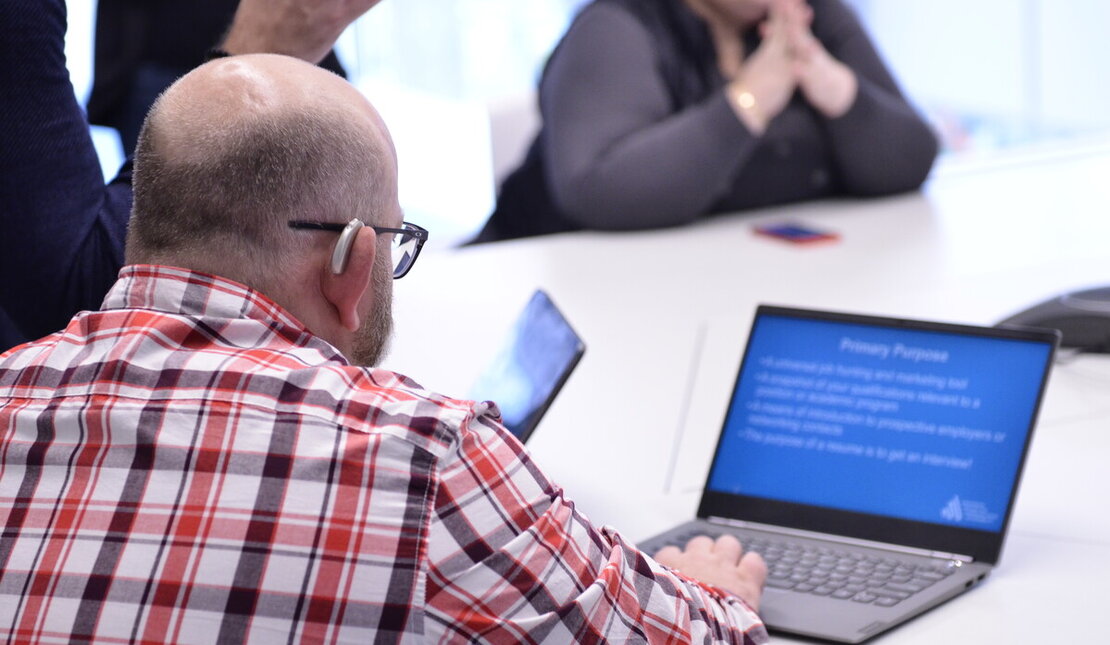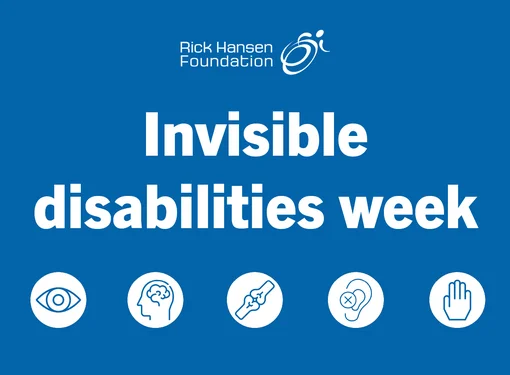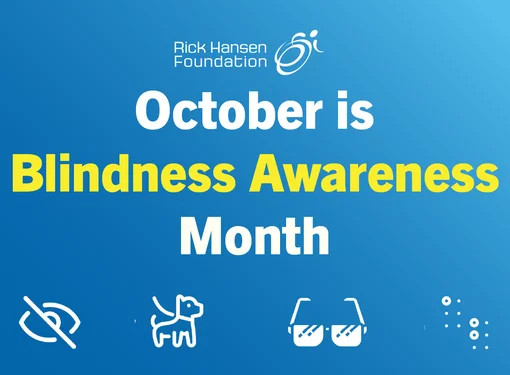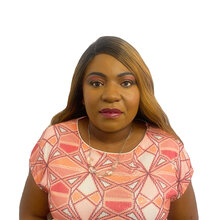A Digital World Without Barriers: Celebrating Global Accessibility Awareness Day!
Imagine living in a world where everyone, regardless of their abilities, can access and enjoy the beauties of the digital world. This vision drives Global Accessibility Awareness Day (GAAD). Celebrated annually on the third Thursday of May, GAAD emphasizes the need to create a more accessible and inclusive digital environment for all.
This day highlights the challenges faced by people with disabilities when interacting with digital products. This year's theme, "Built Without Barriers," emphasizes the collective effort required to ensure accessibility is incorporated into every stage of digital projects, rather than being an afterthought.
Why do we celebrate Global Accessibility and Awareness Day?
Among many reasons, when we celebrate GAAD we help emphasize the importance of creating digital experiences that are accessible to all. In other words, we are promoting the concept of Universal Design, where digital products are accessible by default to everyone's benefit.
We empower people with disabilities by acknowledging their rights to access information like everyone else and to fully participate in the digital world.
GAAD also serves as a catalyst for positive change, as everyone is encouraged to act to become a digital accessibility champion.
Why digital Accessibility Matters?
Accessibility is a matter of dignity and independence. A barrier-free digital world is the key to transitioning from exclusion to full participation in society. It impacts many aspects of life, including employment, education, and access to essential services. Unfortunately, people with various disabilities still face significant challenges when interacting with digital platforms.
The WebAIM 2024 report on the accessibility of the top 1,000,000 home pages highlights key areas where users with disabilities continue to encounter accessibility barriers. Below is a brief summary of the findings.
WCAG Conformance
95.9% of home pages had detected Web Content Accessibility Guidelines 2 (WCAG 2) failures. This improved slightly from 96.3% in 2023. Over the last five years, the pages with detectable WCAG failures have decreased by only 1.9% from 97.8%.
This chart shows the percentage of home pages with detected WCAG conformance failures over time:
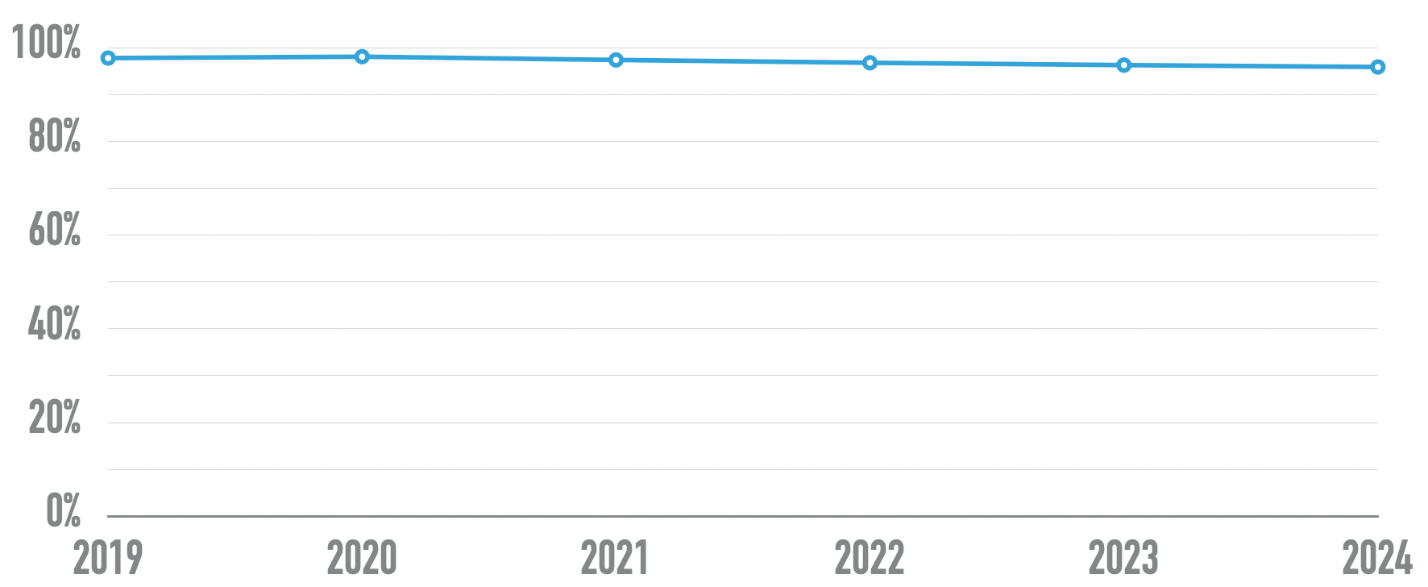
While the rate of pages with no detectable errors was very low, 22.2% of pages had five or fewer detected errors and 31.2% had ten or fewer. Over the last several years the proportion of pages with fewer errors have gotten better while pages with many errors have gotten worse.
Home pages with most common WCAG failures
WCAG Failure Type | % of home pages |
Low contrast text | 81.0% |
Missing alternative text for images | 54.5% |
Missing form input labels | 48.6% |
Empty links | 44.6% |
Empty buttons | 28.2% |
Missing document language | 17.1% |
96.4% of all errors detected fall into these six categories. The most common errors identified in the report have been the same for the last five years.
Addressing just these errors would significantly improve accessibility across the web.
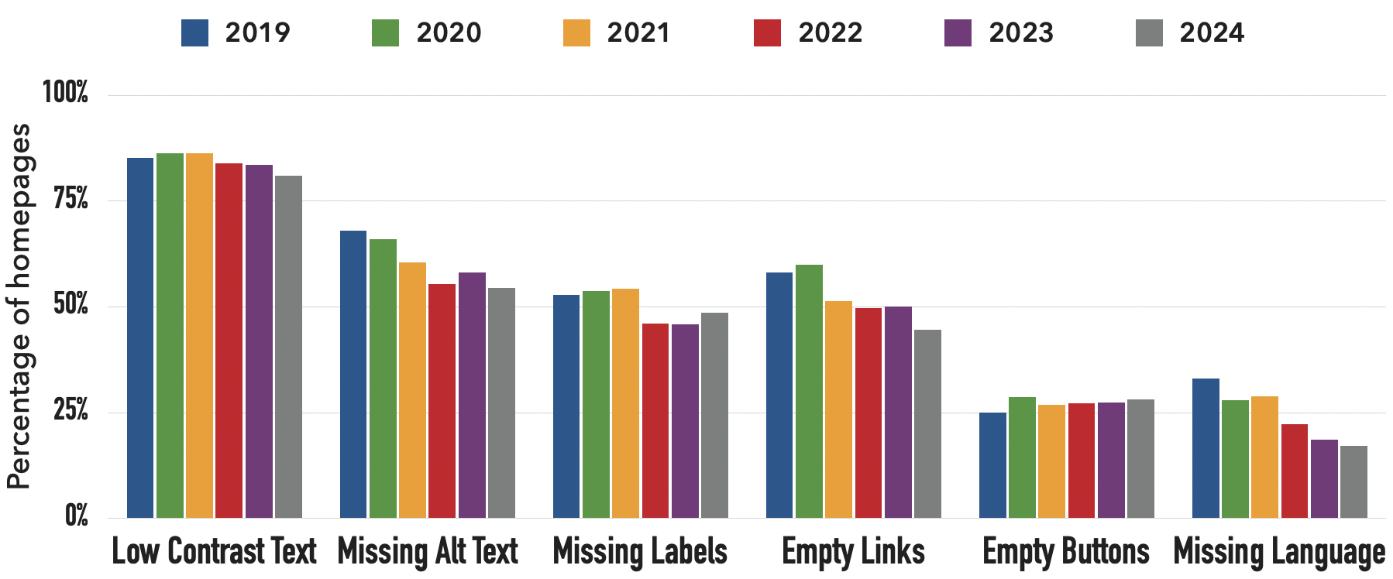
Over time the number of pages with low contrast text, missing alternative text, empty links, and missing document language has decreased while the number of pages with missing form input labels and empty buttons has been largely unchanged.
How can I celebrate Global Accessibility Awareness Day?
There are many simple ways to celebrate GAAD:
- Learning a few tips to design accessible and readable communications for everyone;
- Dedicate time to learn about accessibility standards and guidelines, such as the WCAG and share this knowledge within your community; and
- Design digital products such as documents, websites, apps and/or emails that can be fully accessed using a keyboard alone.
Becoming a digital accessibility champion by removing barriers is a lifelong commitment. Let's celebrate GAAD by committing to build a digital world without barriers, a world where everyone, regardless of ability, can equally participate in all aspects of life.
